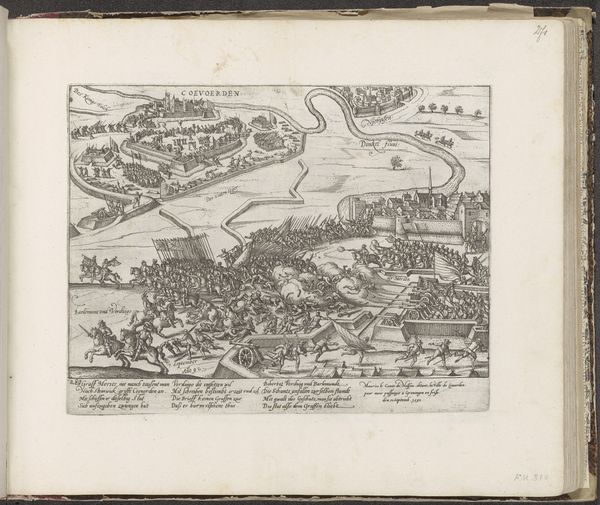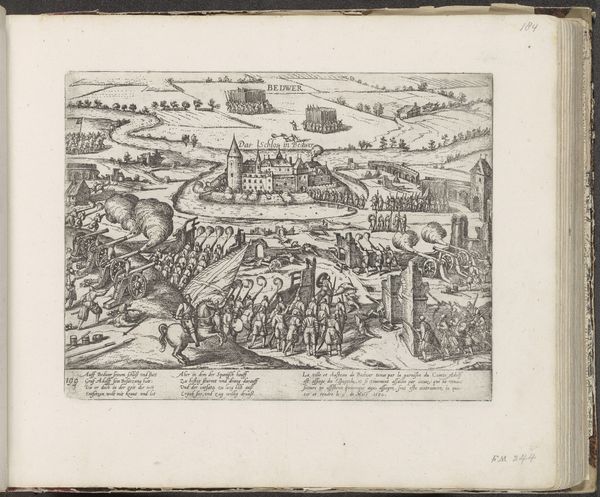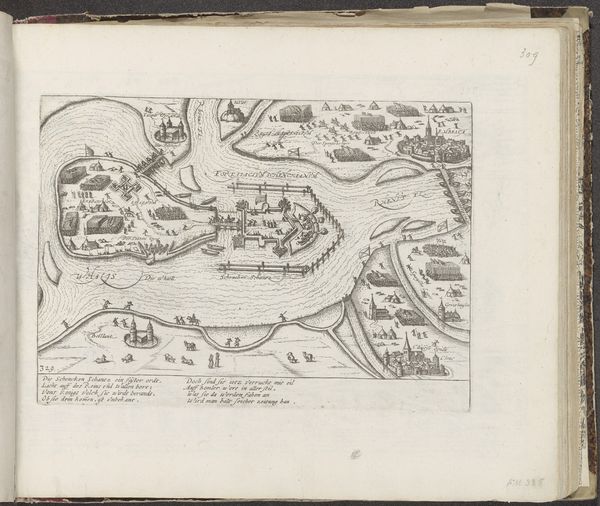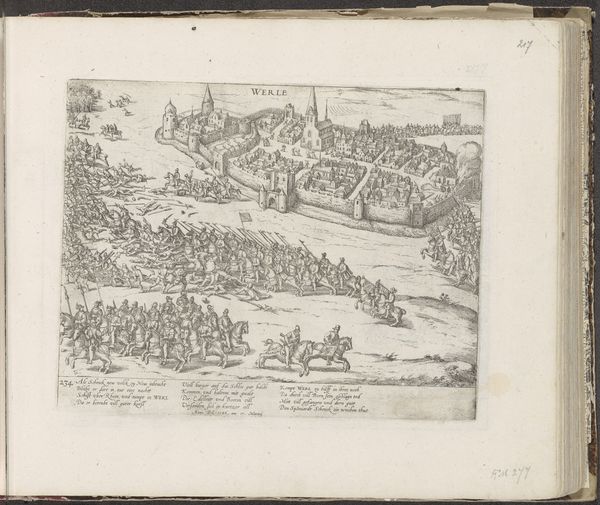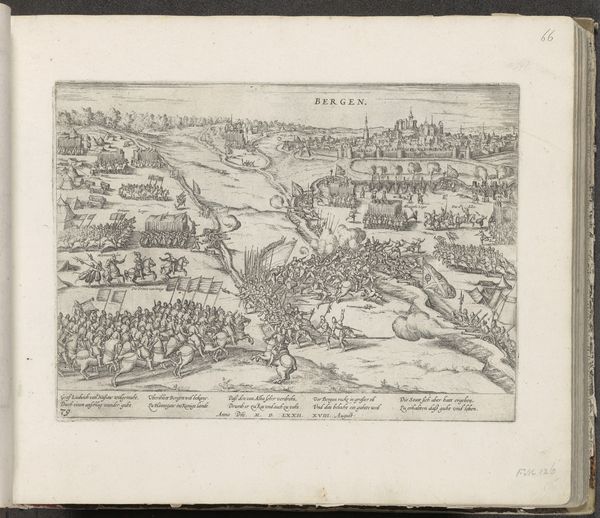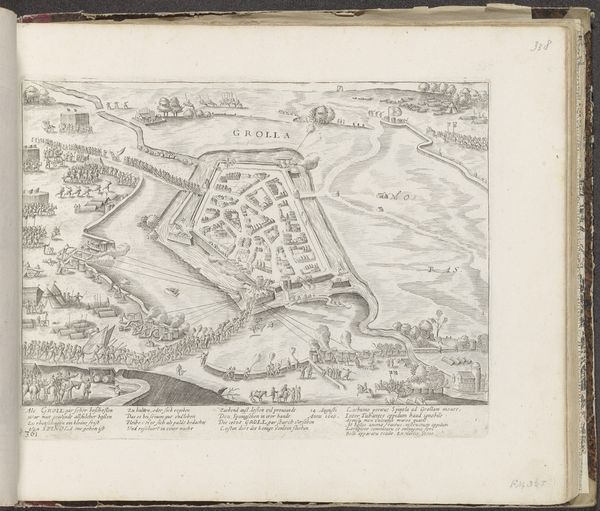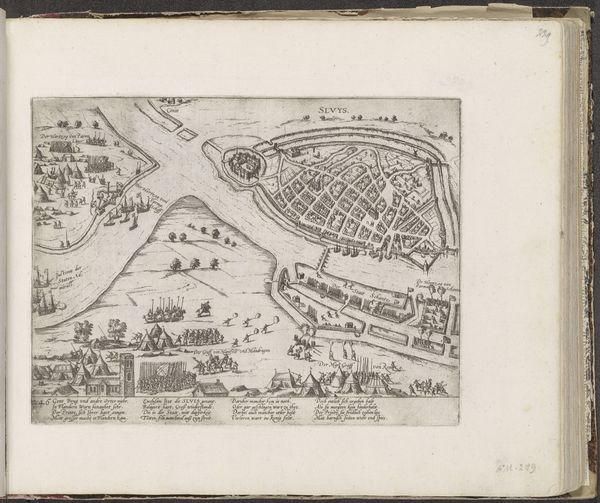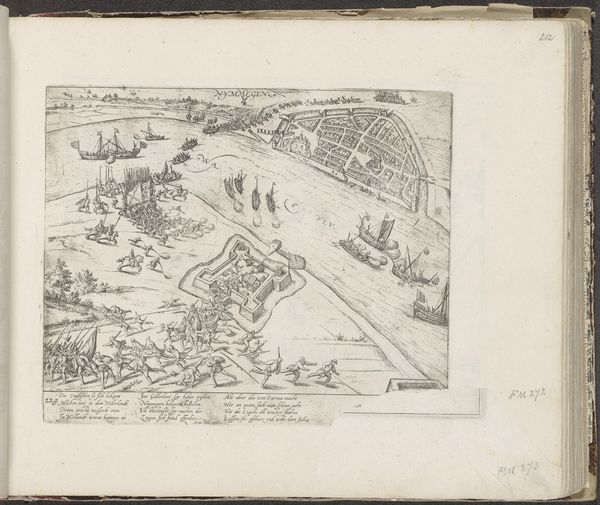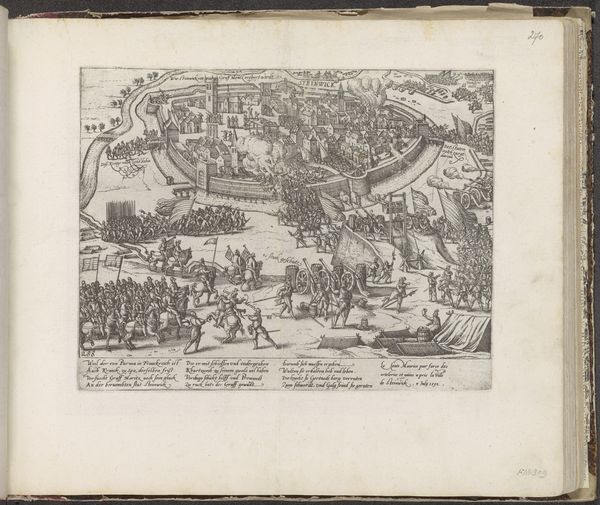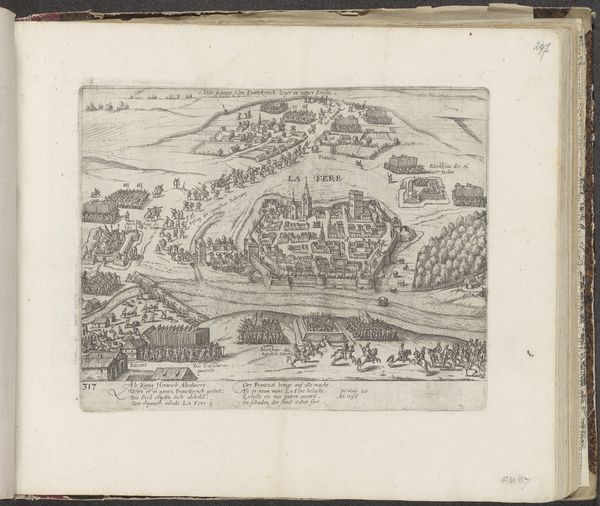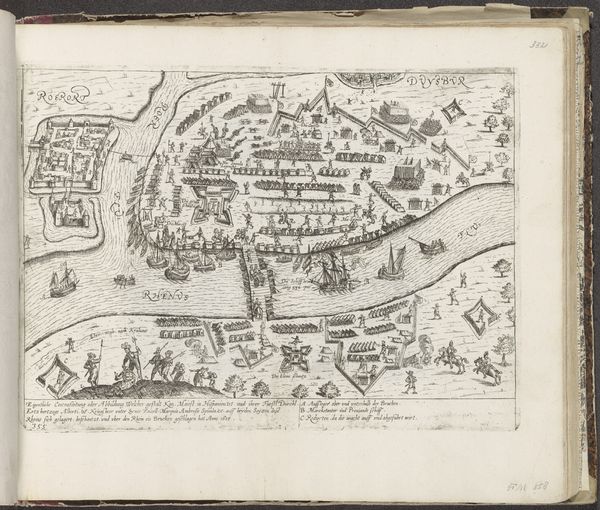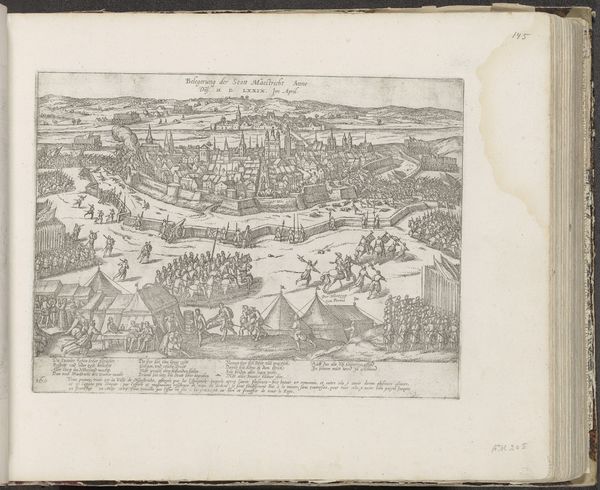
print, engraving
#
narrative-art
# print
#
pen sketch
#
sketch book
#
landscape
#
figuration
#
personal sketchbook
#
sketchwork
#
pen-ink sketch
#
pen and pencil
#
line
#
pen work
#
sketchbook drawing
#
cityscape
#
history-painting
#
storyboard and sketchbook work
#
northern-renaissance
#
sketchbook art
#
engraving
Dimensions: height 221 mm, width 287 mm
Copyright: Rijks Museum: Open Domain
Curator: This engraving, "Parma steekt bij Caudebec de Seine over, 1592," created between 1592 and 1594 by Frans Hogenberg, depicts the Duke of Parma's army crossing the Seine River. The work resides here at the Rijksmuseum. Editor: The immediate impression is of organized chaos. There's so much meticulous detail crammed into this single-page image, yet a stark coolness emanates from the near-monochromatic palette, perhaps indicating the grim reality of warfare. Curator: Precisely. Note the high vantage point, a strategic overview privileging detail and comprehensive understanding. The linearity is exceptional. Hogenberg masterfully uses line to delineate mass movements of troops and the intricate details of siege warfare. Semiotically, consider how such rendering presents war itself as an exercise in control, legible management, a tactical theater. Editor: That order you observe is imposed, it's a European fantasy of rationalized conflict—displacing, and cleansing violence through such mapping. Look more closely: isn’t it a propaganda piece designed to promote militarism and expand geopolitical ambition under the veil of "necessary" interventions? And who are these "necessary" interventions for? Curator: Certainly, prints such as these served contemporary political agendas. However, to me, the interest lies within how space is conceived: the image’s compression gives a palpable sense of contained, measurable reality. Its formalism enacts its period's cognitive project of territorial comprehension and domination, through visual means. Editor: Indeed. Now consider, too, the politics enfolded within this image’s geography: is this not a record of environmental exploitation as well? Armies and their technologies relentlessly transgressing and damaging the natural world. Such visual regimes further normalize ecocide, erasing their true, irretrievable impact on lands, people, futures… Curator: Your points encourage fruitful avenues of inquiry! But returning to composition, consider Hogenberg's ability to condense multiple moments of military action into one temporally ambiguous image, something made possible precisely via line and form… Editor: Yes, perhaps. For me though, what resonates strongest is the ethical problem of spectating human misery. Our role as viewers—complicit participants? As detached as the scene renders itself to us? Food for reflection perhaps! Curator: Absolutely. Thank you, your insightful remarks certainly illuminate how this historical print functions as both artifact and allegory, capable of continued cultural relevance.
Comments
No comments
Be the first to comment and join the conversation on the ultimate creative platform.
